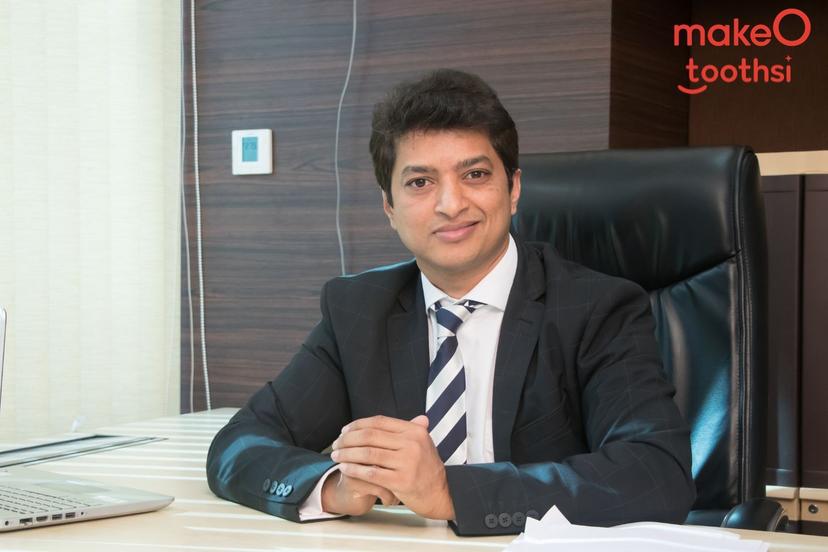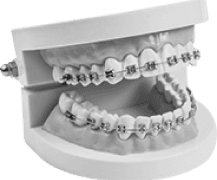MakeO blog
With rapid progress in the field of dentistry, procedures that were once a figment of imagination are now a reality. One such marvel is the dental bone graft procedure. This procedure might sound intimidating and complex, but it's a game-changer, especially for those aspiring for dental implants or facing jawbone deterioration.
Curious to know more about dental bone grafts? We've curated an engaging guide to decode everything you must know about this dental boon.
When is Bone Grafting Done?
Bone grafting is typically performed when there's not enough bone in the jaw to support dental implants. A tooth bone graft provides a solid base, ensuring the implants are stable, durable, and function optimally. Whether due to injury, disease, or natural causes, when the jaw lacks the required bone density, a graft becomes the solution to fix your orthodontic issues.
How Do Bone Grafts Work?
Bone grafting is mainly a procedure where the missing or deteriorated bone is replaced with a graft material. This graft can be derived from the patient’s own body, a donor, or synthetic materials. Once implanted, it encourages the body to rebuild, making the jaw robust and ready for future dental treatments.
The magic behind a dental bone graft lies in its ability to stimulate natural bone growth. Over time, the graft material is replaced by the body with natural bone, integrating seamlessly and providing a solid foundation for implants or other dental work in the future.
Common Causes of Bone Density Loss
Wondering what causes bone density loss? Here are a few common causes of bone density that you must keep in mind.
1. Tooth Extractions
When a tooth is extracted and not immediately replaced, the jawbone in the area starts to atrophy or shrink due to lack of stimulation. Each tooth plays a crucial role in preserving the jaw's structural integrity. Their roots stimulate the surrounding bone during actions like chewing, ensuring the bone remains healthy and dense. Once a tooth is removed, this natural stimulation stops, eventually leading to bone density loss.
2. Periodontal Disease
Periodontal disease is a progressive condition where bacteria infect the gums and gradually destroy the supporting bone structure. As the infection worsens over time, pockets form between the gums and teeth, leading to bone loss. If not treated promptly, this can escalate, causing severe bone density loss and tooth loss.
3. Dentures
While dentures replace the visible part of missing teeth, they don't offer the bone stimulation provided by natural tooth roots. Over time, the jawbone beneath the dentures can resorb and shrink. Ill-fitting dentures can make this worse, as they may exert uneven pressure on the gums and underlying bone.
4. Trauma
Injuries, whether due to accidents, sports incidents, or other traumatic events, can lead to immediate bone loss. If fractures occur in the jaw or face, and if they're not immediately and correctly addressed, the affected bone areas may deteriorate over time, leading to long-term bone density loss.
5. Osteoporosis
Osteoporosis causes bones throughout the body to become brittle and porous. As bone density starts decreasing, the jawbone isn't spared. Individuals with osteoporosis are at an increased risk of experiencing jawbone degradation, which can in turn affect the stability of teeth.
6. Age
As part of the natural ageing process, our bone regeneration slows down while bone resorption (the process where bone cells are broken down and released into the bloodstream) increases. This imbalance can lead to decreased bone density in various body parts, including the jaw. Over time, the compounding effect of ageing can lead to significant bone density loss, making the jaw more prone to fractures and other common dental problems.
Preventative Measures for Bone Density Loss
Is there anything you can do to prevent bone density loss? Yes, there are a few measures you can take to prevent or delay the onset of bone density loss. Here are some easy tips to prevent bone density loss that you must know.
- Regular Dental Check-ups
Periodic visits to the dentist help in early detection and treatment of issues, hence preventing prolonged bone damage.
- Maintaining Good Oral Hygiene
Brushing and flossing daily removes harmful bacteria from your mouth. This reduces your risk of infections that can lead to bone loss. Include makeO toothsi electro and Floss X smart water flosser into your oral care essentials kit and upgrade your oral care game like never before!
- Consuming a Balanced Diet
Eating foods rich in calcium, vitamin D, and phosphorus can strengthen bones, prevent bone density loss and boost your overall oral health.
- Avoiding Smoking and Over-consumption of Alcohol
Both habits can weaken the jawbone and lower bone density. So, if you want to prevent bone density loss, quit smoking and drink sensibly.
- Wearing Protective Gear during Sports
Helmets and mouthguards can prevent traumatic injuries and safeguard the integrity of your jaw and facial bones.
- Replacing Missing Teeth Immediately
Using dental implants or bridges not only restores your smile but also provides necessary bone stimulation, reducing the risk of bone deterioration.
Ensure Your Teeth Get the Best with MakeO Toothsi
To conclude, dental bone grafts are a testament to the tremendous progress dentistry has made, ensuring that individuals can enjoy a full, healthy smile regardless of past oral challenges.
makeO toothsi understands the importance of having a radiant smile. We're here to ensure that every Indian man and woman receives top-tier oral care at all times. From smart electric toothbrushes crafted for precision cleaning, to water flossers that make flossing exciting and makeO toothsi tooth brightening gel that shines your pearly whites, our products are your best friends in the journey towards achieving impeccable dental health.
Shop for makeO toothsi dental care products today and fall in love with your smile again!
FAQs:
What's the difference between a dental bone graft and a tooth bone graft?
They refer to the same procedure. The term 'tooth bone graft' is more specific, highlighting the focus on teeth, while 'dental bone graft' is a broader term encompassing oral bone grafts in general.
How long does it take to heal from a tooth bone graft?
Typically, minor grafts may take a few weeks to months to heal depending from person to person. On the other hand, larger grafts might need several months for complete healing.
Is the dental bone graft procedure painful?
With modern anaesthesia and post-operative care, note that the discomfort and pain will be minimal during the dental bone graft procedure. You can consider taking over-the-counter pain relievers to manage this pain better.
Can I avoid a tooth bone graft and still get implants?
Depending on the bone's condition, some people might be eligible for specific implants that don't require grafts. However, a consultation with a dentist is crucial before you go ahead with any dental surgery.
How successful are oral bone grafts?
If you take proper care and follow post-operative instructions to the T, success rates are very high for oral bone grafts. Note that the success rate is often above 90%.
related categories
Related articles

Types of Braces: Removable vs Fixed Braces, Which is Right For You?

This Diwali, Smile Bright With makeO Teeth Whitening Kit

Dr. Pravin Shetty: Pioneer in Lingual Orthodontics & Innovative Smile Solutions
How do I Know I’m the Right Candidate for makeO toothsi Teeth Aligners?

